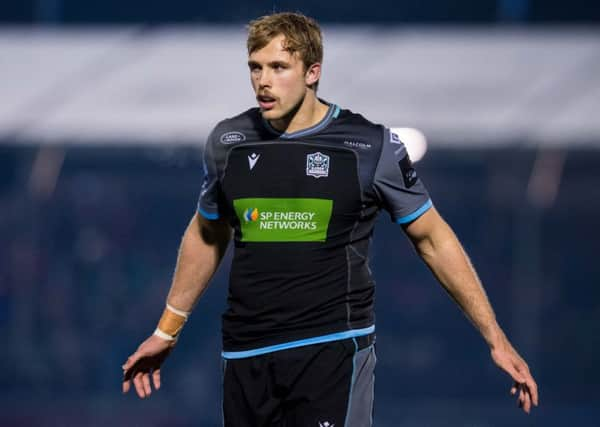Allan Massie: Glasgow’s inability to retain their best players is depressing


The choice at centre three-quarter is also very open, but this is more worrying. It is open because none of the candidates has made a compelling case for himself. At least nine players have appeared in the centre in the last four or five years, while a few others were in the pre-World Cup training camps.
One or two of the nine are probably out of consideration now: Alex Dunbar, for instance, though at least he is playing regularly again for his new club Brive, and perhaps Peter Horne and Matt Scott, though he was impressive in the second round of the 1872 Cup.
Advertisement
Hide AdAdvertisement
Hide AdBut that still leaves six, all but one (Mark Bennett) of whom have featured in the last year or 18 months: Sam Johnson, Huw Jones, Nick Grigg, Chris Harris and Rory Hutchinson. Add Bennett to the mix and you might ask ten people who they would pick and come up with ten different answers at least. In contrast, assuming both are fit, the Irish centre pairing of Robbie Henshaw and Gary Ringrose is well established, while the England one is likely to be Owen Farrell and Manu Tuilagi, unless Farrell moves back to 10 in place of George Ford.
Of the Scottish six Johnson is perhaps in the strongest position because he almost always plays in the 12 position, while the others usually wear the 13 jersey. Jones and Bennett are both returning to the form that made their early international career so impressive, while Hutchinson has been starring in the Northampton Saints team that sits near the top of the English Premiership.
So it’s anybody’s guess. One would only say that a settled centre partnership, like Sean Lineen and Scott Hastings in 1990 or John Leslie and Alan Tait in 1999, is desirable.
The news that Jonny Gray is to move next season from Glasgow to Exeter provokes mixed feelings. On the one hand the change and the new challenge may benefit him, though this isn’t always the case – I don’t think his big brother Richie’s form improved when he went to France, and the same might have been said of Johnnie Beattie a few years earlier. On the other hand Glasgow’s inability to retain their best players is depressing. Leinster and Munster can do this, and I don’t recall that anyone ever suggested that Paul O’Connell would benefit from leaving Munster for a club in the English Premiership. First Finn Russell, then Stuart Hogg, now Jonny Gray – who’s next? How can one take Glasgow’s ambitions seriously if they lose bright star after bright star?
Back in the amateur days, especially before we introduced leagues in the Seventies, it was quite usual for almost half of the Scotland team to play their club rugby in England, mostly for London Scottish, but for other clubs too. We seem to be heading that way again, while Ireland and Wales field home-based XVs.
In one sense this doesn’t matter, but it can be disruptive in the Six Nations because English, Welsh and French clubs are not required to release any Scottish players for the tournament’s two blank or rest weekends.
Last year, for instance, Saracens required Sean Maitland to play (while their English internationals were unavailable). Racing 92 called on Russell (and he got injured), and Clermont-Auvergne on Greig Laidlaw. So, if Scotland picked a side that included, Hogg, Russell, Maitland, Hutchinson, Harris, Thomson and Skinner, they might find a large chunk of their squad playing seven weekends in a row and would be quite likely to lose some of them injured.
Given that for various reasons the odds are against us anyway, this would be far from ideal. It would, however, be the natural consequence of the SRU’s inability to support Glasgow and Edinburgh as well as the IRFU supports Leinster and Munster, Ulster and Connacht. Jonny Gray’s imminent departure merely underlines the point.
Advertisement
Hide AdAdvertisement
Hide AdThere is of course a counter-argument often made. If players don’t move away, then there is likely to be a log-jam and it is harder for young players to make a breakthrough.
Fair enough, but it merely emphasises the point that having only two pro teams leaves us in a weaker position than either Ireland or Wales, let alone England and France. It’s no wonder that Scotland and Italy, with only two pro clubs each, are the poor relations of the other Six Nations countries.